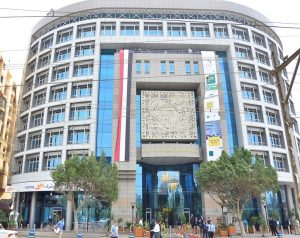Afreximbank’s 9M’20 income down 18.7% on back of Covid-19

November 17, 2020764 views0 comments
- But bank says it’s on strong footing
- net income less by $8.3m from 2019 inflow
- net interest grew by 16% to $421.7m
- interest expense fell 18%
- total assets rose 34% to $19.33bn
The Covid-19 pandemic took a slight cut into the income of African Export-Import Bank (Afreximbank) by -18.7 percent in the pan-African multilateral trade bank’s net income for the nine months ended September 30, 2020.
The bank on Monday in Cairo, Egypt, released its unaudited financial statements for the nine months of this year, indicating that, notwithstanding the impact of the pandemic, it made a net income of $217.06 million against the 2019 net inflow of $225.36 million for the same period, showing a slight decrease on the comparable period last year.
It said net interest income for the nine months however, grew by 16 percent to $421.77 million compared to $362.83 million in 2019, which it said was mainly due to 18 percent decline in interest expense to $272.44 million in 9M, 2020 compared to $331.36 million in the corresponding period of 2019.
The bank equally saw a net interest margin rise of 3.37 percent against 3.32 percent in 2019, reflective of cost-effective management of interest expense, coupled with the relatively higher average yields sustained on the bank’s interest-bearing assets.
Also, the bank’s total assets increased by 34 percent to $19.33 billion as at 30 September this year whereas by 31 December last year, its assets were $14.44 billion. This is attributed primarily as a result of increases in loans and advances and cash and cash equivalents. Loans and advances increased on a net basis by 33 percent underpinned by disbursements under the bank’s Pandemic Trade Impact Mitigation Facility (PATIMFA), a facility launched in March 2020 in response to the COVID-19 pandemic.
Benedict Oramah, Afreximbank’s president said, despite the ravages of the Covid-19 pandemic, the bank remains financially solid across all metrics. “The bank solidified its policy relevance by rising strongly in support of its member countries. It entered the pandemic in a strong financial position, with a solid capital base, high operating efficiency, diversified and high-quality loan portfolio and a strong liquidity position. This has enabled us to record a sound financial performance for the nine-month period and continue to deliver on the bank’s strategic initiatives while fulfilling its obligations to its member countries under conditions of market failure.”
Meanwhile, the bank’s cash and cash equivalents were up by 41 percent to $3.13 billion resulting in the bank ending the period with a strong liquid asset to total assets ratio of 16 percent against 15 percent as of 31 December 2019.
The president said the higher liquidity level was considered necessary to contend with the uncertainties arising from the pandemic. Also, the bank’s capital adequacy ratio remained strong at 22 percent in line with its capital management policy targets, despite its interventions in support of entities in its member countries to enable them to better contend with the Covid-19 challenges.
In March this year, Afreximbank launched the PATIMFA initiative, aimed at helping African sovereigns, commercial banks and corporates to weather the Covid-19 impact. In addition, in September, it launched a $100 million overdraft facility to enable African states to procure Covid-19 related medical resources through the Africa medical supplies platform, an online marketplace for the sale and purchase of medical supplies and equipment.
Oramah said, looking ahead, with this strong foundation and the strategic measures put in place to mitigate the adverse impacts of Covid-19, Afreximbank is “confident in meeting our expectations for the full year, as well as the long-term prospects for the business.”
Meanwhile, credit ratings agency, Fitch, recently affirmed the bank’s long-term issuer default ratings (IDR) at ‘BBB-‘with a stable outlook. The rating was driven by the bank’s intrinsic features, including solvency and liquidity, assessed at ‘a-‘with a downward adjustment to reflect the current business environment.

